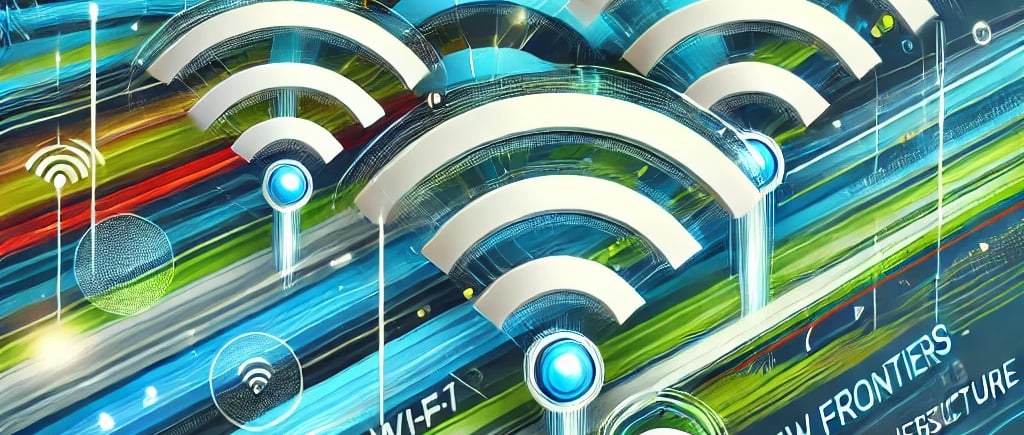Wi‑Fi 7 and the New Frontiers of Wireless Infrastructure
NETWORKS AND DATA INFRASTRUCTURES


Wi‑Fi 7 and the New Frontiers of Wireless Infrastructure
Wi‑Fi 7 (IEEE 802.11be) promises to revolutionize wireless networks by delivering unprecedented speeds and reliability. Theoretically, it can reach speeds up to 30 Gbps—roughly three times faster than Wi‑Fi 6—thanks to wider channels (up to 320 MHz) and 4096‑QAM modulation, which allows for packing more data into each signal. In simple terms, Wi‑Fi 7 can provide ultra‑fast connections with minimal latency, making it ideal for real‑time applications such as virtual reality, gaming, and holographic telepresence.
One of its key innovations is Multi‑Link Operation (MLO): Wi‑Fi 7 devices can simultaneously connect across different bands (2.4, 5, and 6 GHz), improving both reliability and performance. In practice, if one band is congested, data can flow over another, reducing delays and interruptions. Interference management also sees significant improvement through advanced algorithms that steer clear of crowded channels while making optimal use of the available spectrum.
These capabilities are already being embodied in concrete products. For instance, Ubiquiti recently launched its new UniFi Wi‑Fi 7 lineup, which includes the UniFi E7 Access Point. This enterprise‑grade device supports Wi‑Fi 7 with up to 10 simultaneous streams and features a 10‑Gigabit Ethernet uplink port to manage the enormous wireless throughput, along with a backup Gigabit port for high availability. Announced in December 2024 along with campus and outdoor variants, this next‑generation AP is designed for high‑density user environments, delivering multi‑gigabit connectivity and redundancy. In real‑world testing, a UniFi E7 achieved over 2 Gbps of actual throughput on a wireless network connected to a 10‑Gbps fiber line—demonstrating that these performance figures are no longer merely theoretical.
While adopting Wi‑Fi 7 within existing infrastructures will require careful planning, its tangible advantages are clear: increased capacity to support thousands of IoT devices and sensors, uninterrupted 8K video streaming, and even the potential to replace wired Ethernet in office environments with robust wireless links.
An interesting case involves a university campus planning to embrace Wi‑Fi 7 to enable augmented reality applications in teaching. With its low latency and high bandwidth, students could participate in immersive virtual labs without noticeable delays. Wi‑Fi 7 mesh networks may also deliver ubiquitous coverage in crowded spaces—such as large lecture halls or libraries—where current Wi‑Fi solutions often struggle during peak usage.
In summary, Wi‑Fi 7 represents the new frontier in wireless networking. Combining record-breaking speeds, minimal latency, and high reliability, it redefines the “wireless network” standard, enabling scenarios that were once considered unthinkable. The future enterprise wireless network will be a high‑performance environment where devices like the UniFi E7 serve as the pillars supporting an expanding digital ecosystem—from the metaverse to smart cities.
Bibliography:
Cisco – “What is Wi-Fi 7? Explained” (2023).
Ubiquiti – Scheda tecnica Access Point UniFi E7 (2024).
DongKnows Tech – “UniFi E7 Review” (2025).